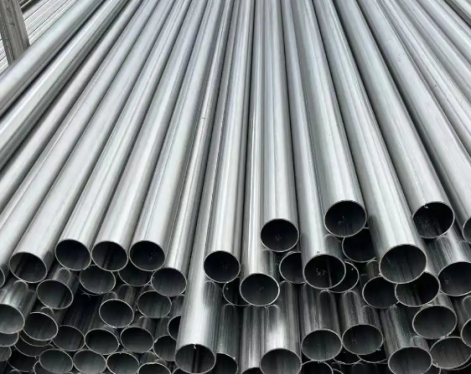Straight seam steel pipes are parallel steel pipes between the steel pipe and the weld seam. They are usually divided into transformer cooling oil pipes and metric electric welded steel pipes. Straight seam steel pipes have many advantages, such as very simple production process, low cost, fast development speed, and high production efficiency, thereby ensuring product quality.
The principle of the straight seam steel pipe is to isolate the air and corrosive media with a paint film to protect the metal surface from corrosion. Commonly used methods of painting the surface of steel sheathed steel insulation pipes and equipment include manual painting, electrostatic spraying and high-pressure spraying.
Next, explain the processing method of straight seam steel pipe:
1. Forging steel, using a forging hammer to generate pressure through repeated impacts and presses, so that the blank becomes the shape and size we want
2. Pull the steel material, and directly reduce the cross section and length of the billet that has been rolled through the drawing of the die hole.
3. Squeeze the steel, put the metal in a closed extrusion space, and apply pressure at one end to make the metal change into the same shape and size from a specific die hole.
Tips: ASME SA106 Pipe is available in three grades of seamless pipe of varying strength, it was a great need of top project consultants, engineers, Oil & Gas Industry as based on several service conducted by different organization in the world that it is a big challenge to procure right A106 Pipe for complicated applications.
The principle of the straight seam steel pipe is to isolate the air and corrosive media with a paint film to protect the metal surface from corrosion. Commonly used methods of painting the surface of steel sheathed steel insulation pipes and equipment include manual painting, electrostatic spraying and high-pressure spraying.
Next, explain the processing method of straight seam steel pipe:
1. Forging steel, using a forging hammer to generate pressure through repeated impacts and presses, so that the blank becomes the shape and size we want
2. Pull the steel material, and directly reduce the cross section and length of the billet that has been rolled through the drawing of the die hole.
3. Squeeze the steel, put the metal in a closed extrusion space, and apply pressure at one end to make the metal change into the same shape and size from a specific die hole.
4.When rolling steel, pass the metal billet through the gap between the rotating rolls. Because of the compression of the rotating rolls, the cross-section of the material becomes smaller and the length becomes longer.
Tips: ASME SA106 Pipe is available in three grades of seamless pipe of varying strength, it was a great need of top project consultants, engineers, Oil & Gas Industry as based on several service conducted by different organization in the world that it is a big challenge to procure right A106 Pipe for complicated applications.









